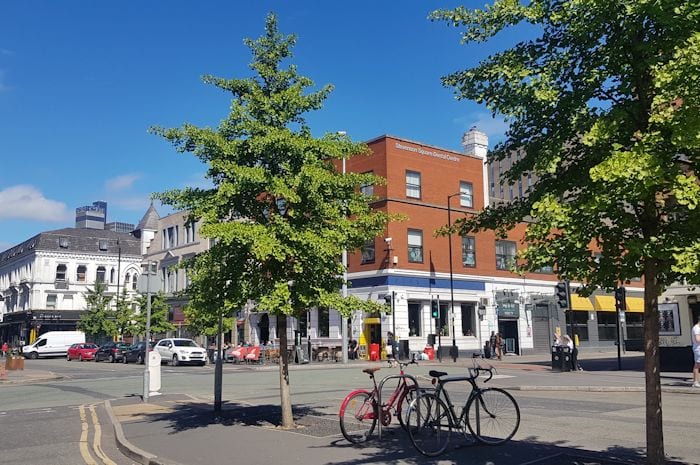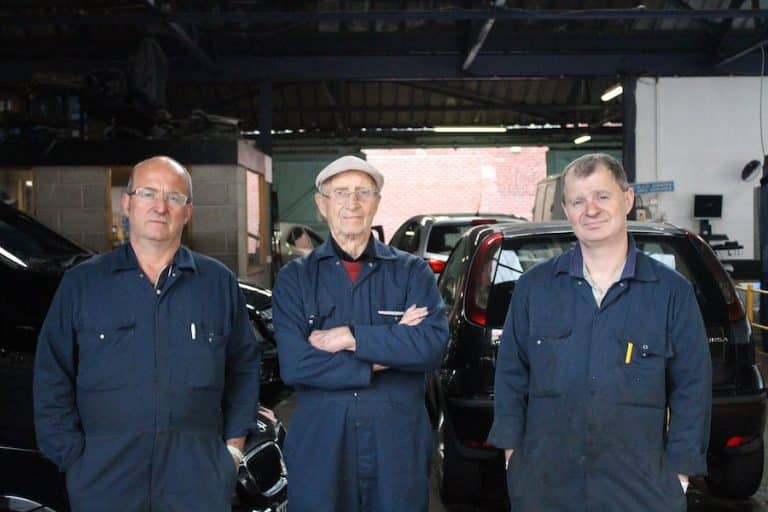Million pound project to plant thousands of trees across Manchester begins
- Written by Louise Rhind-Tutt
- Last updated 4 years ago
- Civic, Community

A £1 million project to plant thousands of new trees across Manchester gets underway next week.
The two-year Tree Action Mcr scheme will involve planting everything from street trees and larger ‘beacon’ trees in parks and cemeteries to hedges, orchards and potentially even new community woodlands.
The first phase, say the Council, will focus on city wards which have historically had fewer street trees and less overall tree cover.
These include Ancoats and Beswick, Ardwick, Cheetham, Clayton and Openshaw, Gorton and Abbey Hey, Miles Platting and Newton Heath, Moss Side, Old Moat, Withington and Woodhouse Park.
First to benefit will be Old Moat ward where almost 50 new trees will be planted on Whitchurch Road (33 pink flowering cherries), Princess Road (10 sweet gum trees) and Old Moat Lane (three slow growing small holly trees.)
But ultimately, the intention is that every ward in the city will get new trees through the Tree Action scheme.
The Council is working with partners including City of Trees and Friends of the Earth to map and help identify opportunities for planting.
Trees bring a wide range of benefits. As well as their visual appeal they help improve air quality, reduce flood risk and counter the effects of climate change by absorbing and storing carbon.
“Tree Action will be the most ambitious and focused tree-planting scheme Manchester has ever seen,” said Councillor Angeliki Stogia.
“The new trees all around the city will be a visible demonstration of our deep-rooted commitment to greening the city and Manchester becoming zero carbon by 2038 at the latest.
“While as a Council we are investing in initiatives such as electric bin lorries and retrofitting buildings to make them more energy efficient as part of our carbon reduction plans, we shouldn’t lose sight of the benefits which more natural solutions can have too.
“Quite simply having more trees is good for our communities, good for our city and good for our planet.
“We’ll be sharing more details about how Manchester people can get involved as the scheme progresses.”
- This article was last updated 4 years ago.
- It was first published on 4 December 2020 and is subject to be updated from time to time. Please refresh or return to see the latest version.
Did we miss something? Let us know: press@ilovemanchester.com
Want to be the first to receive all the latest news stories, what’s on and events from the heart of Manchester? Sign up here.
Manchester is a successful city, but many people suffer. I Love Manchester helps raise awareness and funds to help improve the lives and prospects of people across Greater Manchester – and we can’t do it without your help. So please support us with what you can so we can continue to spread the love. Thank you in advance!
An email you’ll love. Subscribe to our newsletter to get the latest news stories delivered direct to your inbox.
Got a story worth sharing?
What’s the story? We are all ears when it comes to positive news and inspiring stories. You can send story ideas to press@ilovemanchester.com
While we can’t guarantee to publish everything, we will always consider any enquiry or idea that promotes:
- Independent new openings
- Human interest
- Not-for-profit organisations
- Community Interest Companies (CiCs) and projects
- Charities and charitable initiatives
- Affordability and offers saving people over 20%
For anything else, don’t hesitate to get in touch with us about advertorials (from £350+VAT) and advertising opportunities: advertise@ilovemanchester.com


The Manc aerobics queen who trained the Corrie cast is helping raise charity cash

Ancoats to get even cooler as independent market set for MOT garage site

“Manchester is not Britain’s second city, it’s the first” – Jeremy Clarkson
















